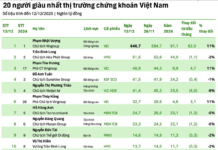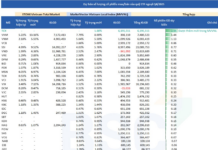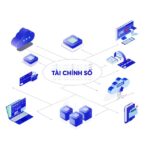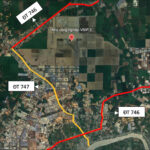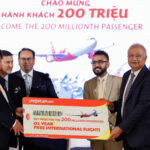The event saw the participation of representatives from supporting agencies and investment funds, including Aozora Bank (Japan), Dream Incubator, and Daiwa Corporate Investment, as well as over 60 business owners and CEOs of SMEs in Vietnam.
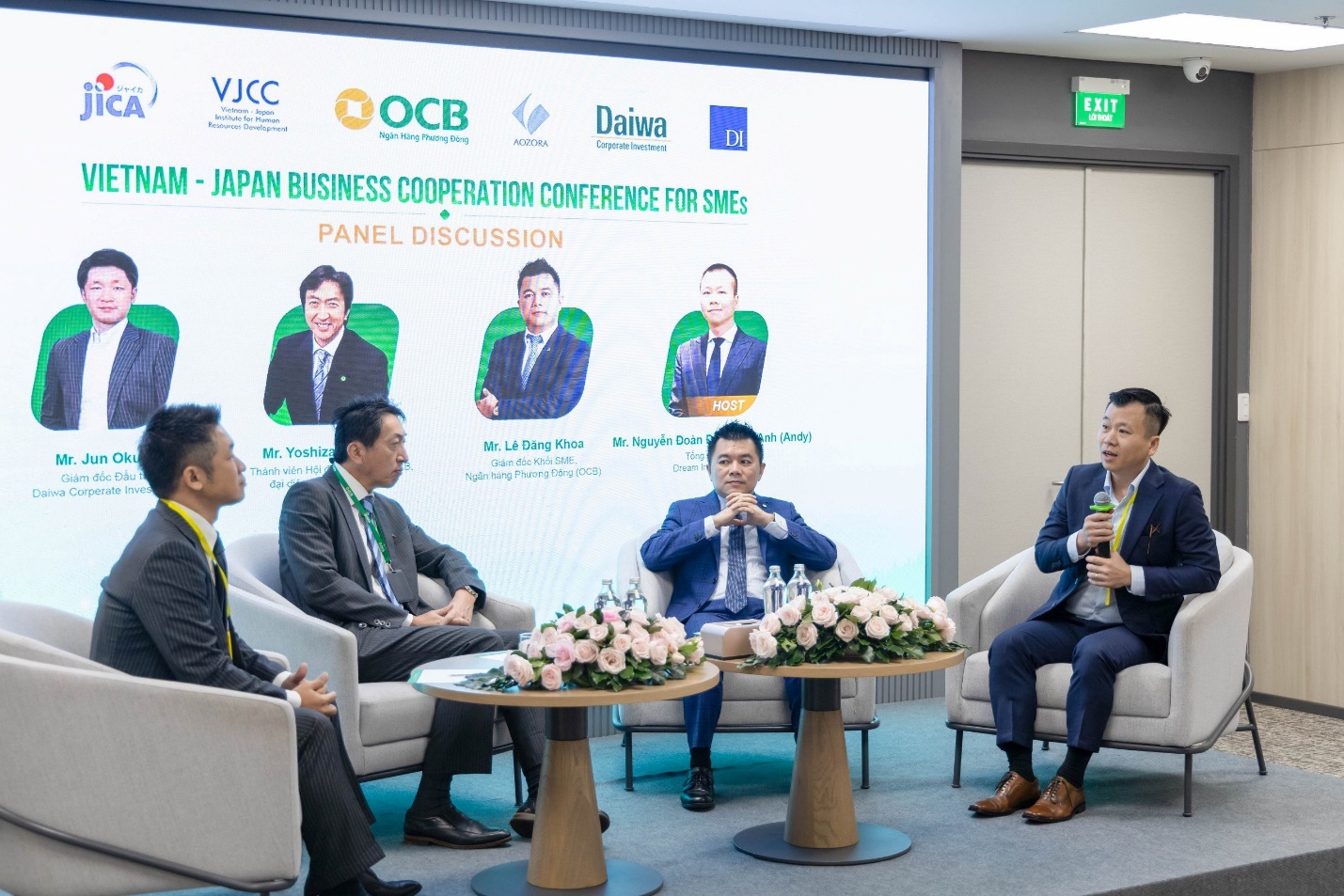
Panelists at the event.
The conference aimed to provide useful and practical information on the macroeconomic situation and monetary market trends, as well as financial solutions offered by OCB to support SMEs. It also aimed to foster M&A opportunities between Vietnam and Japan.
“Bottleneck” in the development of SMEs
As of June 2024, Vietnam had nearly one million businesses. SMEs with revenue below VND 20 billion accounted for 83-85%, and those with revenue below VND 25 billion accounted for 95%. This shows that SMEs can be considered the potential backbone of Vietnam’s economy in the future.
“The SME segment in Vietnam is very dynamic, but it is also the most vulnerable due to the following reasons: Over 80% of SMEs are established within 3 years; Businesses with paid-up capital of less than VND 10 billion account for about 95%. This indicates the ‘endurance’ of this segment in difficult conditions is weak, making it the most vulnerable and easily ‘hurt’ segment. In addition, businesses with revenue below VND 10 billion account for 72%, indicating a high number of micro SMEs in Vietnam. However, the percentage of those reporting profits in two consecutive years on their tax returns is less than 1%”. Mr. Le Dang Khoa, Director of SME Corporate Customer Block, OCB, shared at the event.
According to Mr. Khoa, one of the reasons why SMEs have to leave the market is their choice of an inappropriate business model. Many enterprises tend to focus on solving a market problem or providing a solution or product they believe has a significant competitive advantage in the market. This often leads to an extremely high failure rate. Other risks include relying too much on a single leader, failing to develop a core human resource base, lagging in science and technology adaptation, and limited financial management capabilities, especially in cash flow management.
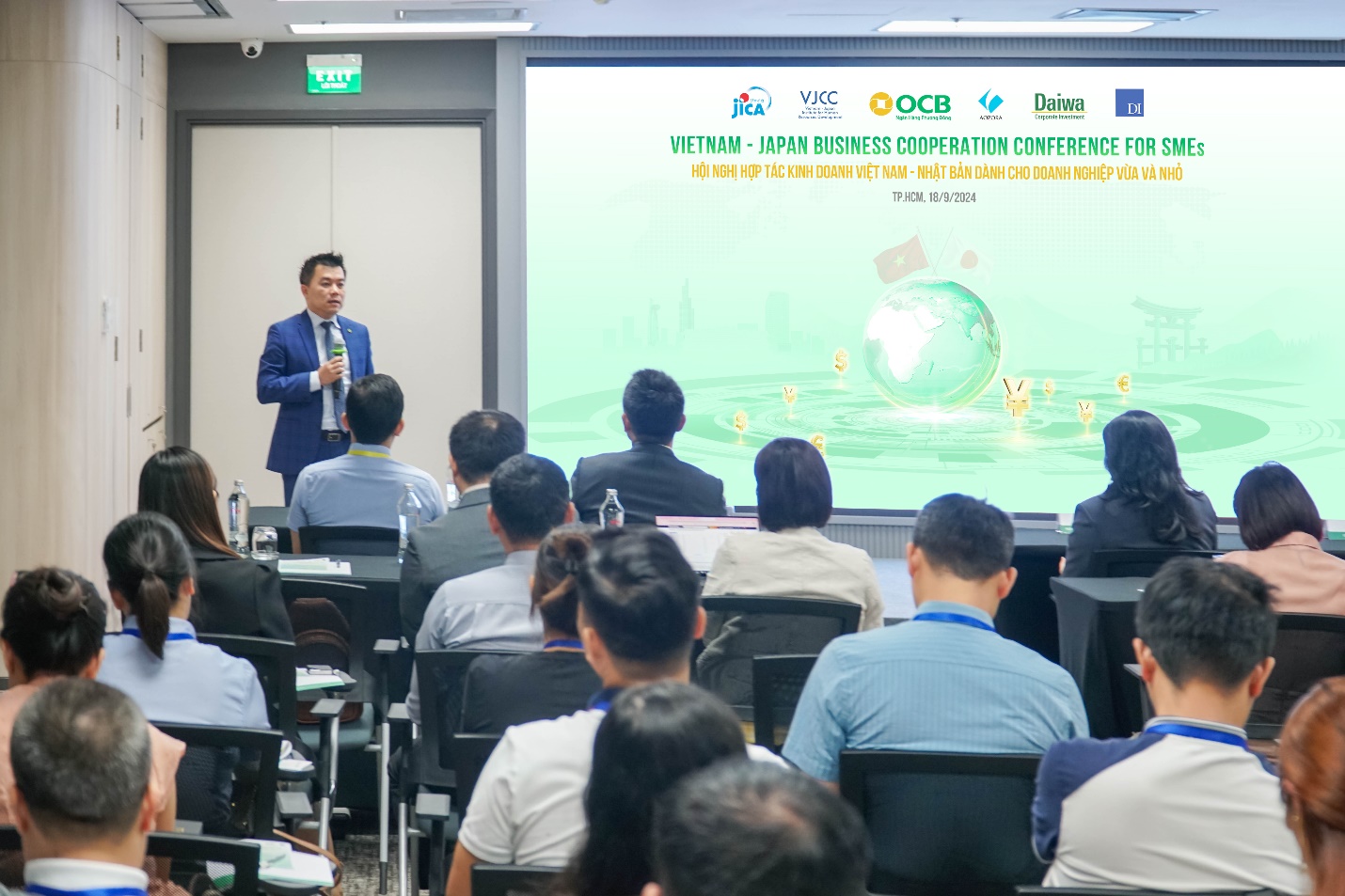
Mr. Le Dang Khoa, Director of SME Corporate Customer Block, OCB, shared at the event.
Understanding these issues, OCB has developed financial solution packages with the orientation of “A Complete Journey of Accompanying Enterprises.” Accordingly, the bank will not only provide standalone products but also comprehensive financial solutions, including loan support, cash flow management, and consulting solutions to help enterprises leverage technology to connect the ecosystem between enterprises, customers, and partners, optimize customer experience, and improve financial management efficiency. These solution packages will be designed according to the specific needs and characteristics of each customer.
Notably, OCB is one of the few banks in the system to pioneer the deployment of Open API – an open API connection system between OCB and Fintech/Partners to support the provision and use of online banking services through the Internet safely and standardly. Currently, with over 150 ready-to-integrate APIs, we can meet the diverse needs of partners from various industries. Open API products and services have been meeting the needs of all segments of corporate customers across industries with powerful processing efficiency: Handling an average of over 2 million transactions/month since the beginning of 2024. In August 2024 alone, we processed nearly 3 million transactions; The total transaction value in the first 8 months of 2024 was recorded at more than VND 18,000 billion. With these strategies and technology platforms, the bank will accompany and support its customers from the startup phase to becoming large and robust enterprises. OCB expects that startups will not only become its customers but also long-term partners, emphasized Mr. Khoa.
Breaking down barriers to M&A between Vietnamese and Japanese SMEs
At the conference, Mr. Jun Okuda, representing Daiwa Corporate Investment, a private equity fund management company, shared that Vietnam is a potential strategic partner for Japanese SMEs. Currently, Japan is expanding its business to other countries, and Vietnam is the second country (after the US) that Japan will invest in most heavily. “Japanese investors are looking at countries with raw materials for them. Accordingly, Vietnam is in the Top 2, only after China”. Mr. Jun Okuda added.
In reality, M&A between Vietnamese and Japanese SMEs still faces many barriers due to differences in politics, regulations, economics, culture, history, language, business characteristics, management methods, and financial capabilities. Specifically, the average age of Japanese companies is 34 years, while the average age of Vietnamese companies is 10 years. As a result, the owners of Japanese companies are mostly from the fourth to fifth generations (aged 50-60), while those in Vietnam are from the first generation and in their early 30s to 34 years old. This will create differences in business planning decisions. The management of Vietnamese SMEs also has many peculiarities, as young enterprises still manually keep books and have not digitized their operations. Moreover, borrowing capital is challenging because collateral or guarantees are required, but the financial capacity of enterprises has not met the expectations of investors. All these factors make it difficult for SMEs to build trust with investors, directly affecting investment decisions.
“To address these issues and open the door to investment from foreign enterprises in Vietnam, enterprises, in general, and SMEs, in particular, need to apply international standards to increase reliability and transparency. This will create opportunities to prove their creditworthiness to banks and access long-term loans. At the same time, they should look for ways to penetrate the Japanese market and adopt Japanese brands and technology…” Mr. Jun Okuda suggested.
In fact, investment loans in Japan usually have very low-interest rates and diverse investors. Through cooperation and joint ventures between enterprises of the two countries, there will be opportunities to access good capital sources that match their orientation. Especially, Vietnamese enterprises can also look for development opportunities on the Tokyo Stock Exchange – one of the best stock exchanges in Asia today.
Currently, some Vietnamese enterprises have planned to list on the Tokyo Stock Exchange, which could be a necessary boost for enterprises to develop more robustly in the future. This will also create a competitive advantage over their competitors in the market and generate more significant revenue growth.
Also, at the conference, a series of questions from enterprises were raised for the experts through the panel discussion, such as the criteria for evaluating and appraising investment opportunities for foreign enterprises; Challenges in investing in the Vietnamese market; Credit incentives from OCB when the borrowing enterprise has Japanese investors…

Guests asking questions to the speakers during the panel discussion.
OCB is a pioneer bank in organizing conferences for SMEs to foster M&A opportunities between Vietnam and Japan. OCB has a professional FDI team fluent in multiple languages and provides “one-stop-shop” services through Japan Desk, Korean Desk, Taiwan Desk, and MNC Desk. This enables OCB to offer comprehensive financial solutions to customers in account management, cash flow, liquidity, trade finance, and foreign exchange. Currently, OCB and AOZ are very successful in serving Japanese and Korean enterprise customers and are expected to continue to expand strongly in the future.
Sustainable Digital Finance: Unlocking New Momentum for Vietnam’s Banking and Finance Industry
The digital shift has become an inevitable trend in Vietnam’s banking and finance sector. To sustain their growth, banks must adopt a comprehensive strategy. MB has released a report titled “The Shift to Sustainable Digital Finance for Vietnam’s Banking and Finance Sector,” offering new insights and direction in this digital era.
The Industrial Revolution: Unveiling a Mega Factory and a District-Sized Construction Site with a $1.3 Billion Vision
The VSIP 3 Industrial Park, spanning an impressive 10 square kilometers (that’s one and a half times the size of District 1 in Ho Chi Minh City), is a burgeoning hub of economic activity. Even before its completion, the park has already attracted eight significant projects, boasting a total investment of 1.6 billion USD. The star attraction is undoubtedly the world’s largest mega-factory by the renowned LEGO Group.















